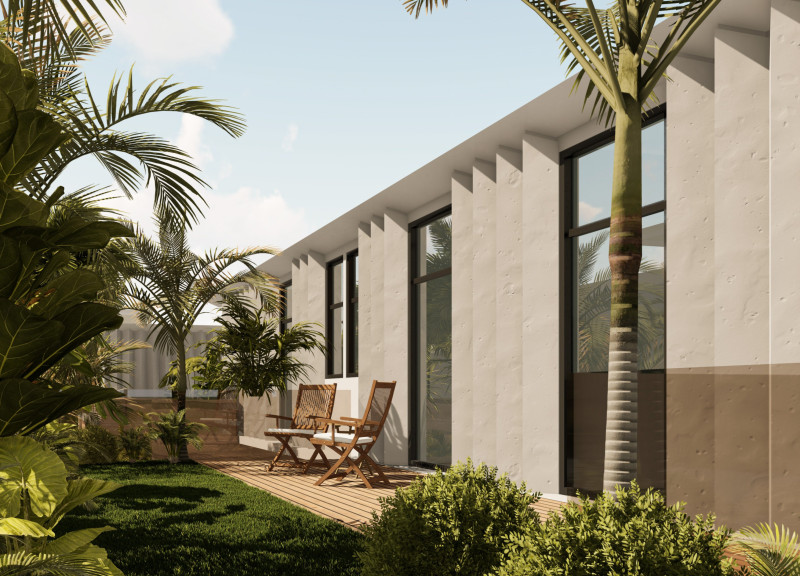5 key facts about this project
At its core, the design reflects a commitment to sustainability and community integration. The architecture not only serves its primary function—whether as a public institution, residential complex, or commercial space—but also as a social hub, a place where individuals and families can gather, interact, and engage with one another. This emphasis on connectivity is evident in the layout and planning, with wide, open spaces that promote accessibility and encourage movement between different areas.
The project features a carefully considered selection of materials that bolster its environmental sustainability while also enhancing its overall aesthetic appeal. Using concrete as a foundational material, the design achieves durability and structural integrity. Glass elements are strategically incorporated to invite natural light into the interior spaces, creating a bright and welcoming atmosphere while providing views of the surrounding landscape. Wood is utilized in various areas, adding warmth and texture to the environment, and reinforcing the connection to nature that is prevalent throughout the project.
Key design features include an innovative roof structure that not only serves a functional role but also contributes to the visual identity of the building. This dynamic form allows for rainwater collection, which underscores the project’s sustainable intentions. The integration of green spaces, both internal and external, is another critical aspect of the design, providing users with areas for relaxation and socialization. These green zones serve as a buffer against urban noise and pollution, enhancing the overall quality of life for occupants and passersby.
Another unique aspect of this architectural design is its sensitivity to the surrounding context. The building's form and materials are designed to complement the existing urban fabric, respecting local history and architectural styles while still asserting a contemporary identity. This balance allows the project to feel harmonious within its environment, inviting curiosity and engagement from the public.
Through thoughtful architectural decisions regarding circulation, accessibility, and communal spaces, the project has created a framework that encourages interaction among users. This not only enhances the user experience but also fosters a sense of community ownership and pride in the space. Innovative use of technology in energy management and climate responsiveness further illustrates a commitment to modern architectural practices while serving the project’s long-term sustainability goals.
In summary, this architectural project stands as a testament to the potential of design to create meaningful spaces that resonate with their occupants. From its careful material choices to its responsive design strategies, every aspect reflects a deep understanding of the needs of the community and the environment. Readers interested in a closer examination of the architectural plans, sections, or broader design ideas will find it beneficial to explore the project presentation for deeper insights into this remarkable endeavor. Exploring these details will provide further appreciation for the unique qualities that define this project and its contribution to contemporary architecture.


























